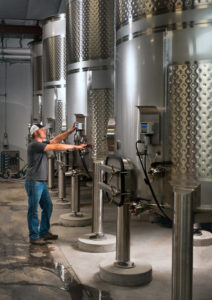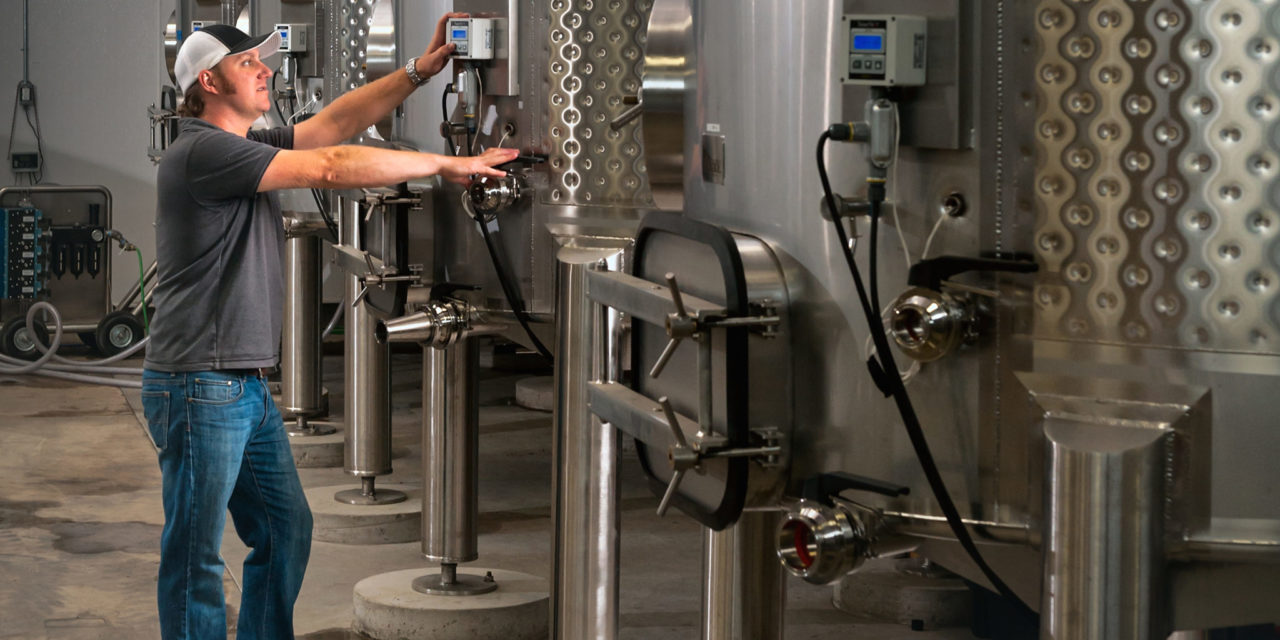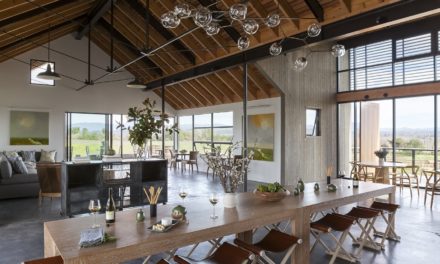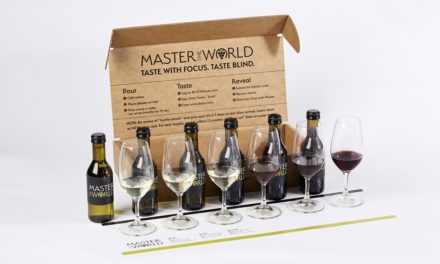
“My ‘white’ tanks are set up so that I can ferment reds if needed—and I have.” —Chris Graves, Naumes Crush & Fermentation
Winemaker Chris Graves of Naumes Crush & Fermentation in Medford, Ore., says it’s critical to have equipment that can handle large (10-plus tons) and small lots (one-half ton or less). His 60-hectoliter membrane Europress can hold up to 5 tons, whole cluster, or 20 tons of fermented wine. It can also press off one-half ton bins. A basket press handles more artisan styles and smaller lots.
“Brand names are important for clients,” says Graves. He suggests Euromachine, Carlsen and Associates, Santa Rosa Stainless Steel, Custom Metalcraft, and JVNW for tanks. He advises those interested in starting a custom crush facility to figure out the total expected tonnage, assess the ratio of whites to reds, and work backwards. Will you process mostly one-half to 1-ton lots, or larger? “If I’m doing 500 tons, I need about 200 tons of fermentation capacity—assuming I can get an average two turns per fermentation—and enough room for barrels after fermentation,” he says.
Variety also matters. For primarily chardonnay and pinot noir, the fruit comes in all at once, so you’ll get one turn out of your tanks. But if you, like he, process everything from A (albariño) to Z (zinfandel), you could get two or three turns out of your tanks per harvest. “Stainless steel fermented whites tie up tanks for long periods of time, so purchase good white fermentation tanks and plan on one turn per vintage on those.”
For fermentation, he recommends one-half ton and 1.5-ton bins, as well 2-, 3-, 5-, and 10-ton, jacketed stainless open-top fermenters. Also closed top tanks with a second manway to dig out in case you need to ferment reds. In short, he summarizes, the point is to have multiple options and flexibility throughout the processes. Says Graves, “My ‘white’ tanks are set up so that I can ferment reds if needed—and I have. I also have ‘floating’ lids for my open-top red fermenters, in case I need to ferment a white or store wine in them at any volume.”
Generally, each producer buys their own barrels, though Graves might bulk buy for several wineries to take advantage of better pricing. He suggests having cooperage sizes including carboys, pony (5 gallon) kegs, one-half barrel kegs (15 gallon), 30-gallon barrels, standard 60-gallon barrels, 75-gallon SS barrels, puncheon barrels (132 gallon) all the way up to larger tanks (up to thousands of gallons), particularly variable capacity.
For in-house filtration, he went with 12-inch lenticular filter housing so he can do both rough and tight filtration, plus sterile filtration, if needed—and he’s available to consult on these decisions, depending on the winemaker’s experience and expectations.











